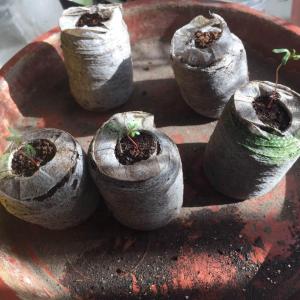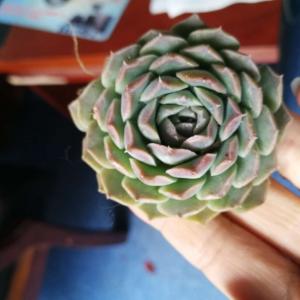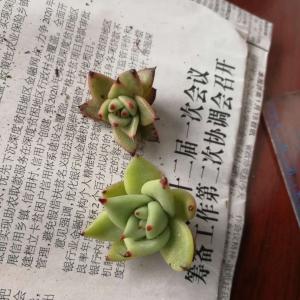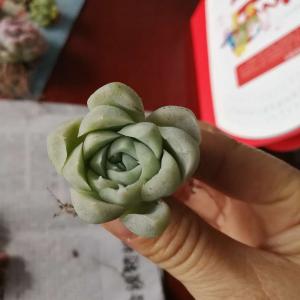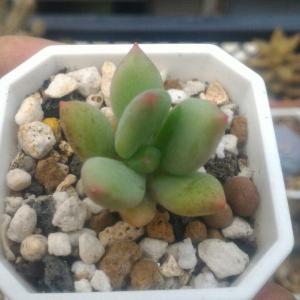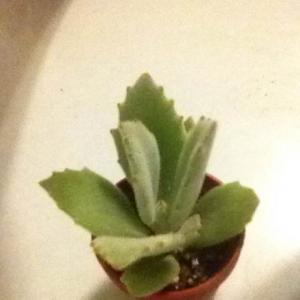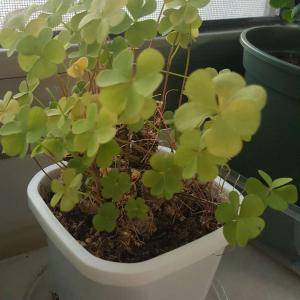文章
Miss Chen
2018年01月22日

Description: This is a herbaceous perennial plant about 2½–5' tall. At its base, there is a rosette of arching basal leaves. These basal leaves are 10-20" long and ½–1¼" across; they are medium green to yellowish green, glabrous, linear in shape, entire (toothless) along their margins, and often folded upward along their midveins. Leaf venation is parallel. A few alternate leaves occur along the central stem of this plant; they are similar to the basal leaves, except smaller in size. The central stem is light green, terete, relatively stout, and unbranched; it is usually glabrous below and pubescent with curly hairs above. The central stem terminates in a panicle of flowers about ¾–2' long and about one-half as much across. The lateral primary branches of this inflorescence are ascending, but not erect; they are somewhat longer toward the bottom and center of the inflorescence. Similar to the upper central stem, these floral branches are light green, terete, relatively stout, and pubescent with curly hairs.
At the base of each floral branch (including the pedicels), there is a linear-lanceolate bract up to ½" long that darkens and withers away with age. The pedicels (basal stalklets) of the flowers are about ¼–¾" long. Individual flowers are about ¾–1" across. Each flower has a white corolla with 6 spreading tepals, 6 stamens with white filaments, 3 white styles, and a light greenish yellow ovary. Individual tepals are lanceolate-oblong in shape, although they taper abruptly above their narrow bases. Just above their narrow bases, the tepals have 2 conspicuous glands that are yellow, green, or yellowish green. These glands secrete nectar. With age, the corollas become green or brownish purple. The flowers are replaced by ovoid-lanceoloid seed capsules up to 18 mm. (2/3") long. These capsules divide into 3 parts to release their seeds; each capsule contains 12 or more seeds. Individual seeds are 5-8 mm. long and about one-half as much across; they are straw-colored and somewhat irregular in shape. The root system is fibrous, short-rhizomatous, and relatively shallow. Clonal offsets can develop from the short rhizomes.

Cultivation: The preference is full or partial sun, wet to moist conditions, and fertile soil. Some standing water is tolerated if it is temporary. Several years of development are required before individual plants begin to flower.
Range & Habitat: The native Virginia Bunch-Flower occurs primarily in west-central Illinois, where it is rare and state-listed as 'threatened' (see Distribution Map). At one time, this plant was more common, but habitat destruction has resulted in population losses in several counties. In Illinois, habitats consist of damp prairies, especially along railroads, and wet ground along the bases of bluffs (these are often seeps). Outside of Illinois, Virginia Bunch-Flower has been found in open bottomland woodlands, damp meadows, swamps, marshes, fens, floating bogs, and roadside ditches. This conservative species is largely restricted to high quality habitats. To maintain populations of this plant within the state, cultivated plants should be used in prairie restorations.

Faunal Associations: Mostly flies and beetles visit the flowers of this plant, where they feed on the easy-to-access nectar, although some insect species may also feed on pollen. These floral visitors include Syrphid flies, Tachinid flies, blow flies (Lucilia spp.), Muscid flies, Anthomyiid flies, weevils, tumbling flower beetles, and flower scarab beetles. Some bees and wasps may also visit the flowers (Robertson, 1929). Because the foliage and roots of Virginia Bunch-Flower contain highly toxic alkaloids, they are not normally eaten by mammalian herbivores. This plant is especially poisonous to horses (Georgia, 1913).

Photographic Location: A prairie or sedge meadow at a nature preserve in Fayette County, Illinois. The photographs were taken by Keith & Patty Horn (Copyright © 2016).
Comments: Another species in the same genus, Melanthium woodii (Wood's Bunch-Flower), is a woodland species with wider leaves and reddish brown (maroon) flowers. The tepals of its flowers do not abruptly contract near their bases. Because of these differences, it is relatively easy to distinguish Wood's Bunch-Flower from Virginia Bunch-Flower. While there are other white-flowered Melanthium spp., they do not occur in Illinois. Some taxonomists prefer to merge the Melanthium genus with the Veratrum genus. When this happens, Virginia Bunchflower is referred to as Veratrum virginicum. Some taxonomists have divided the Lily family (Liliaceae) into several families, assigning the Melanthium genus to the Bunchflower family (Melanthiaceae). When it is in full bloom, Virginia Bunchflower is very showy and attractive.
At the base of each floral branch (including the pedicels), there is a linear-lanceolate bract up to ½" long that darkens and withers away with age. The pedicels (basal stalklets) of the flowers are about ¼–¾" long. Individual flowers are about ¾–1" across. Each flower has a white corolla with 6 spreading tepals, 6 stamens with white filaments, 3 white styles, and a light greenish yellow ovary. Individual tepals are lanceolate-oblong in shape, although they taper abruptly above their narrow bases. Just above their narrow bases, the tepals have 2 conspicuous glands that are yellow, green, or yellowish green. These glands secrete nectar. With age, the corollas become green or brownish purple. The flowers are replaced by ovoid-lanceoloid seed capsules up to 18 mm. (2/3") long. These capsules divide into 3 parts to release their seeds; each capsule contains 12 or more seeds. Individual seeds are 5-8 mm. long and about one-half as much across; they are straw-colored and somewhat irregular in shape. The root system is fibrous, short-rhizomatous, and relatively shallow. Clonal offsets can develop from the short rhizomes.

Cultivation: The preference is full or partial sun, wet to moist conditions, and fertile soil. Some standing water is tolerated if it is temporary. Several years of development are required before individual plants begin to flower.
Range & Habitat: The native Virginia Bunch-Flower occurs primarily in west-central Illinois, where it is rare and state-listed as 'threatened' (see Distribution Map). At one time, this plant was more common, but habitat destruction has resulted in population losses in several counties. In Illinois, habitats consist of damp prairies, especially along railroads, and wet ground along the bases of bluffs (these are often seeps). Outside of Illinois, Virginia Bunch-Flower has been found in open bottomland woodlands, damp meadows, swamps, marshes, fens, floating bogs, and roadside ditches. This conservative species is largely restricted to high quality habitats. To maintain populations of this plant within the state, cultivated plants should be used in prairie restorations.

Faunal Associations: Mostly flies and beetles visit the flowers of this plant, where they feed on the easy-to-access nectar, although some insect species may also feed on pollen. These floral visitors include Syrphid flies, Tachinid flies, blow flies (Lucilia spp.), Muscid flies, Anthomyiid flies, weevils, tumbling flower beetles, and flower scarab beetles. Some bees and wasps may also visit the flowers (Robertson, 1929). Because the foliage and roots of Virginia Bunch-Flower contain highly toxic alkaloids, they are not normally eaten by mammalian herbivores. This plant is especially poisonous to horses (Georgia, 1913).

Photographic Location: A prairie or sedge meadow at a nature preserve in Fayette County, Illinois. The photographs were taken by Keith & Patty Horn (Copyright © 2016).
Comments: Another species in the same genus, Melanthium woodii (Wood's Bunch-Flower), is a woodland species with wider leaves and reddish brown (maroon) flowers. The tepals of its flowers do not abruptly contract near their bases. Because of these differences, it is relatively easy to distinguish Wood's Bunch-Flower from Virginia Bunch-Flower. While there are other white-flowered Melanthium spp., they do not occur in Illinois. Some taxonomists prefer to merge the Melanthium genus with the Veratrum genus. When this happens, Virginia Bunchflower is referred to as Veratrum virginicum. Some taxonomists have divided the Lily family (Liliaceae) into several families, assigning the Melanthium genus to the Bunchflower family (Melanthiaceae). When it is in full bloom, Virginia Bunchflower is very showy and attractive.
0
0
文章
Miss Chen
2018年01月19日

Description: This perennial plant is 2-5' and unbranched. The central stem is green or dark red, and it has short stiff hairs. The leaves toward the base are up to 12" long and 1" wide, becoming progessively shorter and narrower as they alternate up the stalk. The leaves are sufficiently crowded together that they appear whorled. They are narrowly lanceolate or linear, dull green or bluish green, and usually slightly pubescent. The margins are smooth or slightly ciliate.
The central stem terminates in an erect spike-like inflorescence with pink or purplish pink composite flowers. This inflorescence is about ½–1½' long, with the composite flowers more or less densely distributed along its length. The individual flowers are crowded together into buttons about 1" across. Each flower has 5 lobes that spread outward from the corolla tube, from which emerges a long divided style that is often curly. There is no floral scent. The blooming period occurs from late summer to early fall and lasts about 3 weeks for individual plants. Like other Liatris spp., the flowers of Rough Blazingstar begin to bloom at the top of the flowering stalk, and gradually bloom downward as the season progresses. The achenes have large tufts of stiff hair that are light greyish brown, which enables them to be distributed several feet by the wind. The root system consists of a woody corm. Occasionally, offsets develop a short distance from the mother plant, creating small colonies.

Cultivation: The preference is full sun and mesic to dry conditions. The soil can contain significant amounts of loam, clay, sand, or rocky material. However, this plant typically grows in less fertile acidic soil that is rather rocky or sandy. This plant is easy to grow under well-drained conditions, but has a tendency to flop over while in flower if it is spoiled with rich soil or too much moisture. Foliar disease is rarely a problem, and drought resistant is very good, with only a few lower leaves withering away.
Range & Habitat: The native Rough Blazingstar is occasional in central and northern Illinois, but it is uncommon or absent in SE Illinois (see Distribution Map). This wildflower is widely distributed, but rarely forms large colonies in native habitats, unlike Liatris pychnostachya (Prairie Blazingstar). Habitats include mesic to dry black soil prairies, sand prairies, gravel prairies, hill prairies, bald knobs, openings in rocky upland forests, sandy Black Oak woodlands, savannas, limestone glades, dry clay banks above ditches, and open areas along railroads, particularly where prairie remnants occur.

Faunal Associations: Primarily long-tongued bees, butterflies, skippers, and bee flies visit the flowers. Among the long-tongued bees, this includes honeybees, bumblebees, Little Carpenter bees, Miner bees, and Leaf-Cutting bees. Butterfly visitors include Monarchs, Painted Ladies, Black Swallowtails, Sulfurs, and others. Other visitors include Green Metallic bees and other Halictine bees. The latter bees collect pollen primarily, and are not effective pollinators. The caterpillars of the rare Schinia florida (Glorious Flower Moth) feed on the flowers and seed capsules of this and other Liatris spp. Mammmalian herbivores, large and small, readily eat the foliage and stems, including rabbits, deer, groundhogs, and livestock. Sometimes small rodents will dig up the corms and eat them. Consequently, this plant may be scarce where there is an overpopulation of these animals.

Photographic Location: The photographs were taken at Red Bison Railroad Prairie in Savoy, Illinois, Meadowbrook Park in Urbana, Illinois, and the wildflower garden of the webmaster.
Comments: This is a beautiful plant while it is flowering, although the blooming period is rather short. It is possible to extend the season of bloom by planting other Liatris spp, which usually bloom earlier in the year. Among the taller blazingstars, this species prefers drier locations, and can be distinguished from them by the large size of its buttons of flowers. The corms were used as an emergency survival food among some tribes of Amerindians.
The central stem terminates in an erect spike-like inflorescence with pink or purplish pink composite flowers. This inflorescence is about ½–1½' long, with the composite flowers more or less densely distributed along its length. The individual flowers are crowded together into buttons about 1" across. Each flower has 5 lobes that spread outward from the corolla tube, from which emerges a long divided style that is often curly. There is no floral scent. The blooming period occurs from late summer to early fall and lasts about 3 weeks for individual plants. Like other Liatris spp., the flowers of Rough Blazingstar begin to bloom at the top of the flowering stalk, and gradually bloom downward as the season progresses. The achenes have large tufts of stiff hair that are light greyish brown, which enables them to be distributed several feet by the wind. The root system consists of a woody corm. Occasionally, offsets develop a short distance from the mother plant, creating small colonies.

Cultivation: The preference is full sun and mesic to dry conditions. The soil can contain significant amounts of loam, clay, sand, or rocky material. However, this plant typically grows in less fertile acidic soil that is rather rocky or sandy. This plant is easy to grow under well-drained conditions, but has a tendency to flop over while in flower if it is spoiled with rich soil or too much moisture. Foliar disease is rarely a problem, and drought resistant is very good, with only a few lower leaves withering away.
Range & Habitat: The native Rough Blazingstar is occasional in central and northern Illinois, but it is uncommon or absent in SE Illinois (see Distribution Map). This wildflower is widely distributed, but rarely forms large colonies in native habitats, unlike Liatris pychnostachya (Prairie Blazingstar). Habitats include mesic to dry black soil prairies, sand prairies, gravel prairies, hill prairies, bald knobs, openings in rocky upland forests, sandy Black Oak woodlands, savannas, limestone glades, dry clay banks above ditches, and open areas along railroads, particularly where prairie remnants occur.

Faunal Associations: Primarily long-tongued bees, butterflies, skippers, and bee flies visit the flowers. Among the long-tongued bees, this includes honeybees, bumblebees, Little Carpenter bees, Miner bees, and Leaf-Cutting bees. Butterfly visitors include Monarchs, Painted Ladies, Black Swallowtails, Sulfurs, and others. Other visitors include Green Metallic bees and other Halictine bees. The latter bees collect pollen primarily, and are not effective pollinators. The caterpillars of the rare Schinia florida (Glorious Flower Moth) feed on the flowers and seed capsules of this and other Liatris spp. Mammmalian herbivores, large and small, readily eat the foliage and stems, including rabbits, deer, groundhogs, and livestock. Sometimes small rodents will dig up the corms and eat them. Consequently, this plant may be scarce where there is an overpopulation of these animals.

Photographic Location: The photographs were taken at Red Bison Railroad Prairie in Savoy, Illinois, Meadowbrook Park in Urbana, Illinois, and the wildflower garden of the webmaster.
Comments: This is a beautiful plant while it is flowering, although the blooming period is rather short. It is possible to extend the season of bloom by planting other Liatris spp, which usually bloom earlier in the year. Among the taller blazingstars, this species prefers drier locations, and can be distinguished from them by the large size of its buttons of flowers. The corms were used as an emergency survival food among some tribes of Amerindians.
0
0
文章
Miss Chen
2018年01月18日

Description: This perennial plant is 2-5' tall and unbranched, except for short stems bearing flowerheads in the upper half. The stout central stem is slightly ridged and covered with white hairs. The trifoliate leaves occur alternately along the stem on short petioles. Each leaflet is up to 3" long and 1" across, usually ovate in shape, with smooth margins, widely scattered white hairs, and a prominent central vein. Sometimes the surface of the leaves has a silky sheen. The apex of the central stem and some upper side stems terminate in elongated heads of flowers about 2-5" long and half as much across. Each flowerhead has numerous hairy bracts, from which the small white flowers barely protrude. Each flower is a little less than ½" long, and has 5 white petals with a patch of purple near its throat. There is a large upper petal and two smaller side petals, while the remaining petals are usually hidden from view. There is no floral scent. The blooming period occurs from late summer to early fall and lasts about a month. After blooming, the flowerheads gradually turn brown. The root system consists of a central taproot.
Cultivation: The preference is full sun and mesic to dry conditions. This plant is adaptable to different kinds of soil that contain significant amounts of loam, clay, sand, or rocky material. It adds nitrogen to the soil, and is easy to grow. Drought resistance is very good, although some of the lower leaves may turn yellow and fall off the plant.
Range & Habitat: Round-Headed Bush Clover occurs in most counties of Illinois, although it less common in the SE section of the state (see Distribution Map). This native wildflower is occasional to locally common. Habitats include mesic to dry black soil prairies, sand prairies, gravel prairies, hill prairies, loamy savannas and sandy savannas, limestone glades, sand dunes near Lake Michigan, and open areas along railroads and roadsides.

Faunal Associations: The flowers are visited primarily by long- or short-tongued bees, such as bumblebees, large Leaf-Cutting bees, Andrenid bees, and others. Butterflies may suck nectar from the flowers, but they are not effective pollinators. The caterpillars of several species of skippers feed on the foliage, including Thorybes bathyllus (Southern Cloudywing), Thorybes pylades (Northern Cloudywing), Achalarus lyciades (Hoary Edge), and Epargyreus clarus (Silver-Spotted Skipper). The caterpillars of several moths also feed on the foliage, including Utetheisa bella (Bella Moth), Dasylophia anguina (Black-Spotted Prominent), and Ptichodis herbarum (Common Ptichodis). Other insects feeding on this plant include Everes comyntas (Eastern-Tailed Blue), Tetralopha scortealis (Lespedeza Webworm), Pachybrachis carbonarius (Leaf Beetle sp.), Calomycterus setarius (Imported Long-Horned Beetle), and various Alydus spp. (Broad-Headed Bugs). Because it is high in protein and palatable, many mammalian herbivores eat the plant during different growth stages, including deer, rabbits, groundhogs, and livestock. An overpopulation of these animals may interfere with this plant's establishment. The seeds are eaten primarily by upland gamebirds, including the Mourning Dove, Bobwhite, and Wild Turkey. During the winter, the seeds are eaten by the Slate-Colored Junco.

Photographic Location: The photographs were taken at Meadowbrook Park in Urbana, Illinois.
Comments: This is a robust and beneficial plant, although not particularly showy. It is fairly easy to distinguish this plant from other members of the Bean family, such as the tick trefoils and other bush clovers, by the stout bristly flowerheads and their small white flowers. However, there is some variability in the appearance of this plant across different localities.
Cultivation: The preference is full sun and mesic to dry conditions. This plant is adaptable to different kinds of soil that contain significant amounts of loam, clay, sand, or rocky material. It adds nitrogen to the soil, and is easy to grow. Drought resistance is very good, although some of the lower leaves may turn yellow and fall off the plant.
Range & Habitat: Round-Headed Bush Clover occurs in most counties of Illinois, although it less common in the SE section of the state (see Distribution Map). This native wildflower is occasional to locally common. Habitats include mesic to dry black soil prairies, sand prairies, gravel prairies, hill prairies, loamy savannas and sandy savannas, limestone glades, sand dunes near Lake Michigan, and open areas along railroads and roadsides.

Faunal Associations: The flowers are visited primarily by long- or short-tongued bees, such as bumblebees, large Leaf-Cutting bees, Andrenid bees, and others. Butterflies may suck nectar from the flowers, but they are not effective pollinators. The caterpillars of several species of skippers feed on the foliage, including Thorybes bathyllus (Southern Cloudywing), Thorybes pylades (Northern Cloudywing), Achalarus lyciades (Hoary Edge), and Epargyreus clarus (Silver-Spotted Skipper). The caterpillars of several moths also feed on the foliage, including Utetheisa bella (Bella Moth), Dasylophia anguina (Black-Spotted Prominent), and Ptichodis herbarum (Common Ptichodis). Other insects feeding on this plant include Everes comyntas (Eastern-Tailed Blue), Tetralopha scortealis (Lespedeza Webworm), Pachybrachis carbonarius (Leaf Beetle sp.), Calomycterus setarius (Imported Long-Horned Beetle), and various Alydus spp. (Broad-Headed Bugs). Because it is high in protein and palatable, many mammalian herbivores eat the plant during different growth stages, including deer, rabbits, groundhogs, and livestock. An overpopulation of these animals may interfere with this plant's establishment. The seeds are eaten primarily by upland gamebirds, including the Mourning Dove, Bobwhite, and Wild Turkey. During the winter, the seeds are eaten by the Slate-Colored Junco.

Photographic Location: The photographs were taken at Meadowbrook Park in Urbana, Illinois.
Comments: This is a robust and beneficial plant, although not particularly showy. It is fairly easy to distinguish this plant from other members of the Bean family, such as the tick trefoils and other bush clovers, by the stout bristly flowerheads and their small white flowers. However, there is some variability in the appearance of this plant across different localities.
0
0
文章
Miss Chen
2018年01月18日

Description: This is a biennial plant that becomes 2-5' tall during its second year. During the first year, a rosette of spreading to ascending basal leaves develops that is up to 1' across. Individual basal leaves are up to 6" long and 2" across; they are elliptic-oblanceolate to obovate in shape, while their margins are unlobed to shallowly pinnatifid, occasionally sinuous (horizontally wavy), and dentate-prickly. During the second year, this plant develops an erect central stem that is unbranched below, while branching occasionally above. The stems are light green, terete, glabrous, and often glaucous. Alternate leaves occur along the entire length of these stems, becoming gradually smaller above; their blades are widely spreading to ascending. The blades of these alternate leaves are up to 8" long and 2" across; they are elliptic-oblanceolate to oblanceolate in shape, while their margins are unlobed to moderately pinnatifid, occasionally sinuous, and dentate-prickly.
The upper surface of both basal and alternate leaves is yellowish green to medium green, glabrous and sometimes glaucous, while their lower surface is light green, glabrous, and sometimes glaucous. In addition, abundant prickles occur along the central vein of the lower leaf surface, while sparse prickles sometimes occur along the major lateral veins. The bases of alternate leaves clasp their stems with short rounded auricles (ear-like basal lobes) that are dentate-prickly and occasionally sinuous. The tips of these leaves are bluntly angled to acute. Both the stems and leaves of this plant contain a brown latex. The central stem and sometimes upper lateral stems terminate in panicles of flowerheads; these panicles are variable in size, but on larger plants they become up to 1½' long and 1' across. The branches of each inflorescence are more slender than the stems, otherwise they share similar characteristics. Small bractlets occur where these branches divide. The flowerheads often fail to open, but they are self-fertile. Those flowerheads that do open (on bright sunny days during the morning), can vary considerably in size, depending on the local ecotype; their diameter varies from 4-6 mm. in some areas to 12-18 mm. in other areas. Each flowerhead has 20-55 widely spreading ray florets and no disk florets. The petaloid rays of the flowerhead are narrowly oblong in shape; their tips are truncate and 5-toothed. The petaloid rays are usually light blue, but sometimes they are white to yellow. The tips of the petaloid rays, where the teeth occur, are often pale bronze.

The bases of flowerheads (involucres) are up to 15-20 mm. long and cylindrical-lanceoloid to lanceoloid in shape; they achieve their maximum size shortly after blooming. Around the base of each flowerhead, the floral bracts (involucral bracts) are arranged in several series; inner floral bracts are longer than outer floral bracts. They are linear-lanceolate in shape (upper-inner bracts) to ovate in shape (lower-outer bracts) and appressed together; these bracts are light green with white to purplish red margins, and they are glabrous. The blooming period occurs during the summer and early autumn, lasting 1½–3 months. Afterwards, the flowerheads are replaced by dense clusters of achenes. Mature achenes are about 4 mm. long, broadly ellipsoid-flattened in shape, and black mottled with brown; each side of an achene has a single central rib (less often 2-3 ribs). At the apex of each achene, there is a white thread-like beak about 4 mm. long, and attached to the apex of this beak is a tuft of white hairs spanning about 15-20 mm. across (individual hairs are 7-10 mm. long). These achenes are distributed by the wind. The root system consists of a taproot. This plant spreads by reseeding itself.

Cultivation: The preference is full sun, mesic to dry conditions, and soil containing sandy loam, loam, clay-loam, or loess. First-year rosettes of basal leaves may die down during winter, but new leaves are regenerated from the taproot during the spring. Open ground with exposed topsoil facilitates germination of the seed. Cultivation of this plant is not difficult, but it is rather weedy-looking and its flowerheads often fail to open.
Range & Habitat: The native Prairie Lettuce is rare in Illinois and state-listed as 'endangered.' It has been found primarily in the northern and west-central sections of the state (see Distribution Map). Illinois lies along the eastern range-limit of this species; it is more common in many areas of central and western United States. Populations of Prairie Lettuce have declined in Illinois, where it is found in such habitats as mesic to dry prairies and hill prairies. Disturbed areas of high quality natural habitats (mainly prairies) are preferred. This wildflower probably benefits from the disturbance provided by occasional wildfires and grazing by American Bison; this animal prefers to graze on grasses rather than forbs.

Faunal Associations: Little is known specifically about the relationships of Prairie Lettuce to various fauna. The flowerheads of this plant are probably cross-pollinated by various long-tongued and short-tongued bees. Insects that feed destructively on both cultivated and various species of wild lettuce (Lactuca spp.) consist primarily of aphids and larvae of polyphagous moths. The webmaster observed unidentified blackish aphids feeding on the upper stems and inflorescence branches of Prairie Lettuce. Both White-tailed Deer and the Cottontail Rabbit occasionally browse on the foliage of this plant; the latter animal fed on some of the basal leaves of Prairie Lettuce while it was being cultivated in a garden by the webmaster.
Photographic Location: The wildflower garden of the webmaster in Urbana, Illinois.

Comments: There are several native and non-native lettuce species (Lactuca spp.) that exist as wildflowers in Illinois. Most of these species are similar in appearance and they can be difficult to distinguish; the presence of both flowerheads and achenes are often required for correct identification. Prairie Lettuce (Lactuca ludoviciana) can be distinguished from many lettuce species by the brown latex of its foliage (rather than white latex). The rays of its flowerheads are often blue, rather than yellow, and the involucres (bract-covered bases) of these flowerheads are usually larger in size (up to 15-20 mm. long). The achenes of Prairie Lettuce have single-ribbed sides (less often 2-3 ribbed) and they have long thread-like beaks that are attached to relatively large tufts of hair (15-20 mm. across). A common Eurasian species, Prickly Lettuce (Lactuca serriola), differs from Prairie Lettuce by having flowerheads with pale yellow rays only (never blue), shorter involucres (up to 10-12 mm. long), and achenes with 5-7 ribs per side, to which are attached smaller tufts of white hair (only 7-10 mm. across).

A common native species, Lactuca canadensis (Wild Lettuce), differs by having leaves that lack stiff prickles along their margins, flowerheads with yellow to orange-yellow rays (never blue), shorter involucres (up to 10-15 mm. long), and achenes with smaller tufts of white hair (10-14 mm. across). Another native species, Lactuca biennis (Tall Blue Lettuce), has shorter involucres (up to 8-10 mm. long), achenes with 5-6 ribs per side, very short or no beaks on the achenes, and smaller tufts of hair (10-12 mm. across) that are light brown, rather than white. Another native species, Lactuca florida (Woodland Blue Lettuce), differs by having leaves with triangular-shaped terminal lobes, shorter involucres (up to 10-12 mm. long), achenes with 5-6 ribs per side, very short or no beaks on its achenes, and smaller tufts of white hair (8-10 mm. across). An uncommon native species, Lactuca hirsuta (Hairy Wild Lettuce), differs from Prairie Lettuce by having hairy stems, hairy leaves with ciliate margins, and flowerheads that sometimes have reddish rays, rather than yellow.
The upper surface of both basal and alternate leaves is yellowish green to medium green, glabrous and sometimes glaucous, while their lower surface is light green, glabrous, and sometimes glaucous. In addition, abundant prickles occur along the central vein of the lower leaf surface, while sparse prickles sometimes occur along the major lateral veins. The bases of alternate leaves clasp their stems with short rounded auricles (ear-like basal lobes) that are dentate-prickly and occasionally sinuous. The tips of these leaves are bluntly angled to acute. Both the stems and leaves of this plant contain a brown latex. The central stem and sometimes upper lateral stems terminate in panicles of flowerheads; these panicles are variable in size, but on larger plants they become up to 1½' long and 1' across. The branches of each inflorescence are more slender than the stems, otherwise they share similar characteristics. Small bractlets occur where these branches divide. The flowerheads often fail to open, but they are self-fertile. Those flowerheads that do open (on bright sunny days during the morning), can vary considerably in size, depending on the local ecotype; their diameter varies from 4-6 mm. in some areas to 12-18 mm. in other areas. Each flowerhead has 20-55 widely spreading ray florets and no disk florets. The petaloid rays of the flowerhead are narrowly oblong in shape; their tips are truncate and 5-toothed. The petaloid rays are usually light blue, but sometimes they are white to yellow. The tips of the petaloid rays, where the teeth occur, are often pale bronze.

The bases of flowerheads (involucres) are up to 15-20 mm. long and cylindrical-lanceoloid to lanceoloid in shape; they achieve their maximum size shortly after blooming. Around the base of each flowerhead, the floral bracts (involucral bracts) are arranged in several series; inner floral bracts are longer than outer floral bracts. They are linear-lanceolate in shape (upper-inner bracts) to ovate in shape (lower-outer bracts) and appressed together; these bracts are light green with white to purplish red margins, and they are glabrous. The blooming period occurs during the summer and early autumn, lasting 1½–3 months. Afterwards, the flowerheads are replaced by dense clusters of achenes. Mature achenes are about 4 mm. long, broadly ellipsoid-flattened in shape, and black mottled with brown; each side of an achene has a single central rib (less often 2-3 ribs). At the apex of each achene, there is a white thread-like beak about 4 mm. long, and attached to the apex of this beak is a tuft of white hairs spanning about 15-20 mm. across (individual hairs are 7-10 mm. long). These achenes are distributed by the wind. The root system consists of a taproot. This plant spreads by reseeding itself.

Cultivation: The preference is full sun, mesic to dry conditions, and soil containing sandy loam, loam, clay-loam, or loess. First-year rosettes of basal leaves may die down during winter, but new leaves are regenerated from the taproot during the spring. Open ground with exposed topsoil facilitates germination of the seed. Cultivation of this plant is not difficult, but it is rather weedy-looking and its flowerheads often fail to open.
Range & Habitat: The native Prairie Lettuce is rare in Illinois and state-listed as 'endangered.' It has been found primarily in the northern and west-central sections of the state (see Distribution Map). Illinois lies along the eastern range-limit of this species; it is more common in many areas of central and western United States. Populations of Prairie Lettuce have declined in Illinois, where it is found in such habitats as mesic to dry prairies and hill prairies. Disturbed areas of high quality natural habitats (mainly prairies) are preferred. This wildflower probably benefits from the disturbance provided by occasional wildfires and grazing by American Bison; this animal prefers to graze on grasses rather than forbs.

Faunal Associations: Little is known specifically about the relationships of Prairie Lettuce to various fauna. The flowerheads of this plant are probably cross-pollinated by various long-tongued and short-tongued bees. Insects that feed destructively on both cultivated and various species of wild lettuce (Lactuca spp.) consist primarily of aphids and larvae of polyphagous moths. The webmaster observed unidentified blackish aphids feeding on the upper stems and inflorescence branches of Prairie Lettuce. Both White-tailed Deer and the Cottontail Rabbit occasionally browse on the foliage of this plant; the latter animal fed on some of the basal leaves of Prairie Lettuce while it was being cultivated in a garden by the webmaster.
Photographic Location: The wildflower garden of the webmaster in Urbana, Illinois.

Comments: There are several native and non-native lettuce species (Lactuca spp.) that exist as wildflowers in Illinois. Most of these species are similar in appearance and they can be difficult to distinguish; the presence of both flowerheads and achenes are often required for correct identification. Prairie Lettuce (Lactuca ludoviciana) can be distinguished from many lettuce species by the brown latex of its foliage (rather than white latex). The rays of its flowerheads are often blue, rather than yellow, and the involucres (bract-covered bases) of these flowerheads are usually larger in size (up to 15-20 mm. long). The achenes of Prairie Lettuce have single-ribbed sides (less often 2-3 ribbed) and they have long thread-like beaks that are attached to relatively large tufts of hair (15-20 mm. across). A common Eurasian species, Prickly Lettuce (Lactuca serriola), differs from Prairie Lettuce by having flowerheads with pale yellow rays only (never blue), shorter involucres (up to 10-12 mm. long), and achenes with 5-7 ribs per side, to which are attached smaller tufts of white hair (only 7-10 mm. across).

A common native species, Lactuca canadensis (Wild Lettuce), differs by having leaves that lack stiff prickles along their margins, flowerheads with yellow to orange-yellow rays (never blue), shorter involucres (up to 10-15 mm. long), and achenes with smaller tufts of white hair (10-14 mm. across). Another native species, Lactuca biennis (Tall Blue Lettuce), has shorter involucres (up to 8-10 mm. long), achenes with 5-6 ribs per side, very short or no beaks on the achenes, and smaller tufts of hair (10-12 mm. across) that are light brown, rather than white. Another native species, Lactuca florida (Woodland Blue Lettuce), differs by having leaves with triangular-shaped terminal lobes, shorter involucres (up to 10-12 mm. long), achenes with 5-6 ribs per side, very short or no beaks on its achenes, and smaller tufts of white hair (8-10 mm. across). An uncommon native species, Lactuca hirsuta (Hairy Wild Lettuce), differs from Prairie Lettuce by having hairy stems, hairy leaves with ciliate margins, and flowerheads that sometimes have reddish rays, rather than yellow.
0
0
文章
Miss Chen
2018年01月12日

Description: This herbaceous perennial plant forms a low rosette of basal leaves, from which a flowering stalk about 2-5' tall develops. Alternate leaves occur along the lower one-half of this stalk, becoming smaller in size and more widely separated above. The unbranched central stalk is pale green, terete, and rather stout. This stalk is densely long-hairy below, becoming sparsely long-hairy and/or short-pubescent above; the long hairs are either white or brown. The basal and lower alternate leaves are 3-8" long and ¾–1¾" across; they are usually oblanceolate in shape and their margins are entire (toothless). The middle to upper alternate leaves are linear-lanceolate or elliptic in shape and their margins are entire (toothless). The basal and lower alternate leaves have long white hairs or long brown hairs that are 1/3–1" in length; these hairs are most abundant along the margins, central veins, and bases of the leaves. The upper surface of both basal and alternate leaves is medium green, while the lower surface of these leaves is pale green. The central stem terminates in a cylindrical panicle of flowerheads about ½–1½' in length; this panicle is longer than it is across. Both the lateral branches and peduncles (basal stalks) of the flowerheads are short (less than 2½" in length). The central stalk, lateral branches, and peduncles are pale green, terete, and glandular-hairy.
The flowerheads are ½–1" across when they are fully open, consisting of 30-80 fertile ray florets and no disk florets. The spreading petaloid rays of these florets are yellow and linear in shape; their tips are truncate and 5-toothed. The base of the flowerhead is cylindrical-campanulate (cylindrically bell-shaped) or cylindrical-urceolate (cylindrically urn-shaped); it is surrounded by several phyllaries (floral bracts) in a single series. These phyllaries are linear-lanceolate in shape, appressed, pale green, and glandular-hairy. Some of the glandular hairs on the phyllaries have black bases. There are also secondary floral bracts that are much smaller in size; they are located at the base of the flowerhead. The blooming period occurs from mid-summer to late summer, lasting about 1 month for a colony of plants. Afterwards, the florets are replaced by achenes with tufts of tawny hair at their apices; they are distributed by the wind. The achenes are 3-4 mm. long, dark-colored, and fusiform (spindle-shaped); there are no thread-like beaks connecting the tufts of hair to the achenes. The root system consists of a caudex or short crown with fibrous roots.

Cultivation: The preference is full sun, mesic to dry conditions, and soil containing loam, clay-loam, sand, or rocky material.
Range & Habitat: Long-bearded Hawkweed is a native plant that has been found in most areas of Illinois, although it is now widely scattered and uncommon (see Distribution Map). Populations of this plant have declined with the destruction of prairie habitat. Habitats include black soil prairies, clay prairies, sand prairies, prairie remnants along railroads, typical savannas and sandy savannas, upland rocky woodlands, and disturbed areas along railroads. Long-bearded Hawkweed occurs primarily in high quality natural areas.

Faunal Associations: Very little is known about the floral-faunal relationships for Long-bearded Hawkweed. Gangwere (1961) reported that Spharagemon bolli (Boll's Grasshopper) feeds on the dry leaves of this plant. The flowerheads of hawkweeds (Hieracium spp.) are cross-pollinated primarily by little carpenter bees (Ceratina spp.), Halictid bees (including green metallic bees), and other bees. Some aphids feed on the sap of these plants, including Nasonovia ribisnigri (Currant-Lettuce Aphid) and Uroleucon sonchi (Sow Thistle Aphid); see Blackman & Eastop (2013). The Ruffed Grouse and Wild Turkey feed on the basal leaves and seeds of hawkweeds, while their foliage is sometimes browsed by the White-tailed Deer and Cottontail Rabbit (Martin et al., 1951/1961). However, Georgia (1913) states that cattle and other domesticated livestock usually avoid the hairy bitter foliage of these plants.

Photographic Location: A prairie in Fayette County, Illinois. The photographs were taken by Keith & Patty Horn (Copyright © 2015).
Comments: The native Long-bearded Hawkweed can be distinguished from other hawkweeds (Hieracium spp.) by the exceptionally long hairs (1/3–1" in length) of its basal leaves, lower alternate leaves, and lower flowering stalk. Other hawkweeds in Illinois have hairs that are less than 1/3" long. In addition to having shorter hairs on its foliage, a similar native species, Hieracium gronovius (Gronovius' Hawkweed), has slightly smaller flowerheads with fewer ray florets (20-40). Another common name of Hieracium longipilum is Long-haired Hawkweed.
The flowerheads are ½–1" across when they are fully open, consisting of 30-80 fertile ray florets and no disk florets. The spreading petaloid rays of these florets are yellow and linear in shape; their tips are truncate and 5-toothed. The base of the flowerhead is cylindrical-campanulate (cylindrically bell-shaped) or cylindrical-urceolate (cylindrically urn-shaped); it is surrounded by several phyllaries (floral bracts) in a single series. These phyllaries are linear-lanceolate in shape, appressed, pale green, and glandular-hairy. Some of the glandular hairs on the phyllaries have black bases. There are also secondary floral bracts that are much smaller in size; they are located at the base of the flowerhead. The blooming period occurs from mid-summer to late summer, lasting about 1 month for a colony of plants. Afterwards, the florets are replaced by achenes with tufts of tawny hair at their apices; they are distributed by the wind. The achenes are 3-4 mm. long, dark-colored, and fusiform (spindle-shaped); there are no thread-like beaks connecting the tufts of hair to the achenes. The root system consists of a caudex or short crown with fibrous roots.

Cultivation: The preference is full sun, mesic to dry conditions, and soil containing loam, clay-loam, sand, or rocky material.
Range & Habitat: Long-bearded Hawkweed is a native plant that has been found in most areas of Illinois, although it is now widely scattered and uncommon (see Distribution Map). Populations of this plant have declined with the destruction of prairie habitat. Habitats include black soil prairies, clay prairies, sand prairies, prairie remnants along railroads, typical savannas and sandy savannas, upland rocky woodlands, and disturbed areas along railroads. Long-bearded Hawkweed occurs primarily in high quality natural areas.

Faunal Associations: Very little is known about the floral-faunal relationships for Long-bearded Hawkweed. Gangwere (1961) reported that Spharagemon bolli (Boll's Grasshopper) feeds on the dry leaves of this plant. The flowerheads of hawkweeds (Hieracium spp.) are cross-pollinated primarily by little carpenter bees (Ceratina spp.), Halictid bees (including green metallic bees), and other bees. Some aphids feed on the sap of these plants, including Nasonovia ribisnigri (Currant-Lettuce Aphid) and Uroleucon sonchi (Sow Thistle Aphid); see Blackman & Eastop (2013). The Ruffed Grouse and Wild Turkey feed on the basal leaves and seeds of hawkweeds, while their foliage is sometimes browsed by the White-tailed Deer and Cottontail Rabbit (Martin et al., 1951/1961). However, Georgia (1913) states that cattle and other domesticated livestock usually avoid the hairy bitter foliage of these plants.

Photographic Location: A prairie in Fayette County, Illinois. The photographs were taken by Keith & Patty Horn (Copyright © 2015).
Comments: The native Long-bearded Hawkweed can be distinguished from other hawkweeds (Hieracium spp.) by the exceptionally long hairs (1/3–1" in length) of its basal leaves, lower alternate leaves, and lower flowering stalk. Other hawkweeds in Illinois have hairs that are less than 1/3" long. In addition to having shorter hairs on its foliage, a similar native species, Hieracium gronovius (Gronovius' Hawkweed), has slightly smaller flowerheads with fewer ray florets (20-40). Another common name of Hieracium longipilum is Long-haired Hawkweed.
0
0



